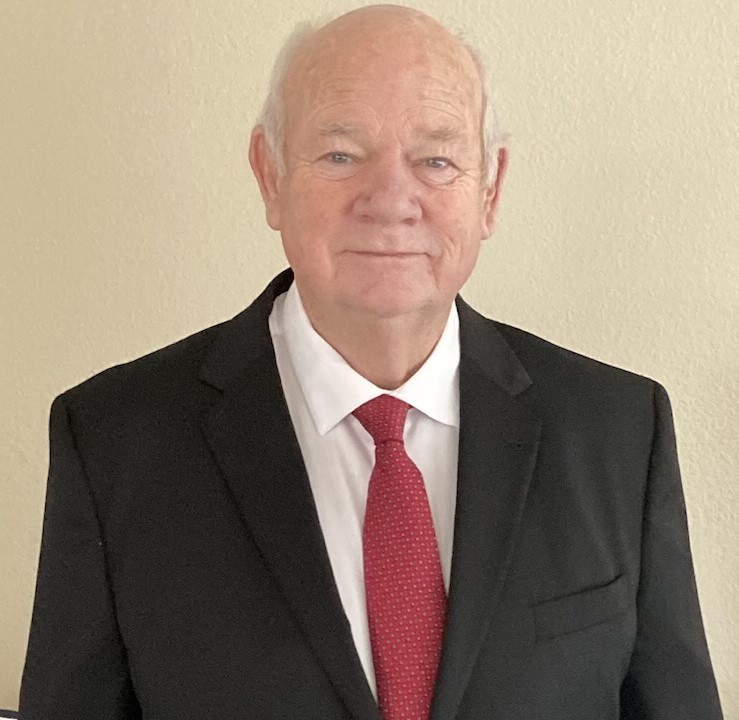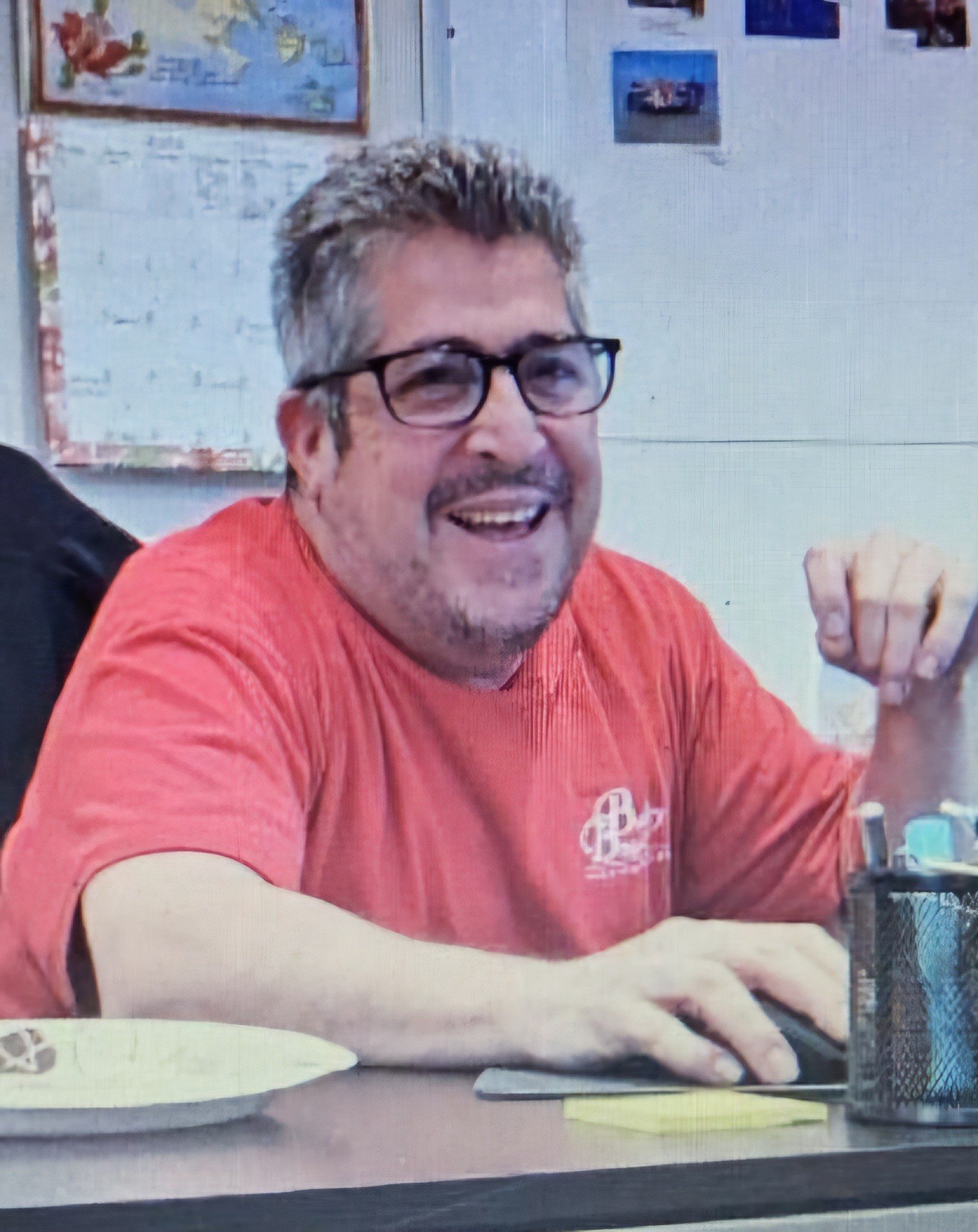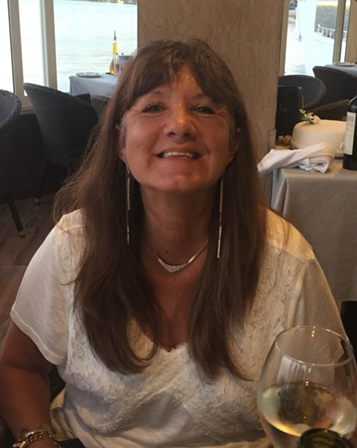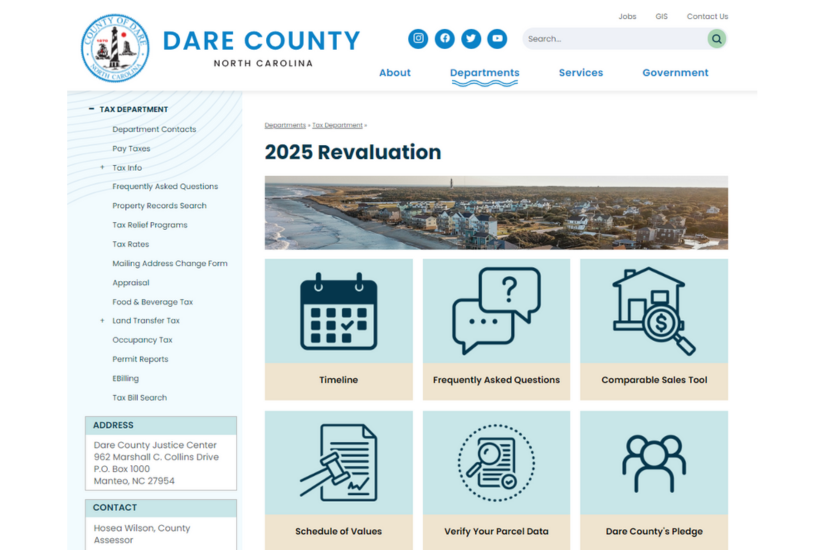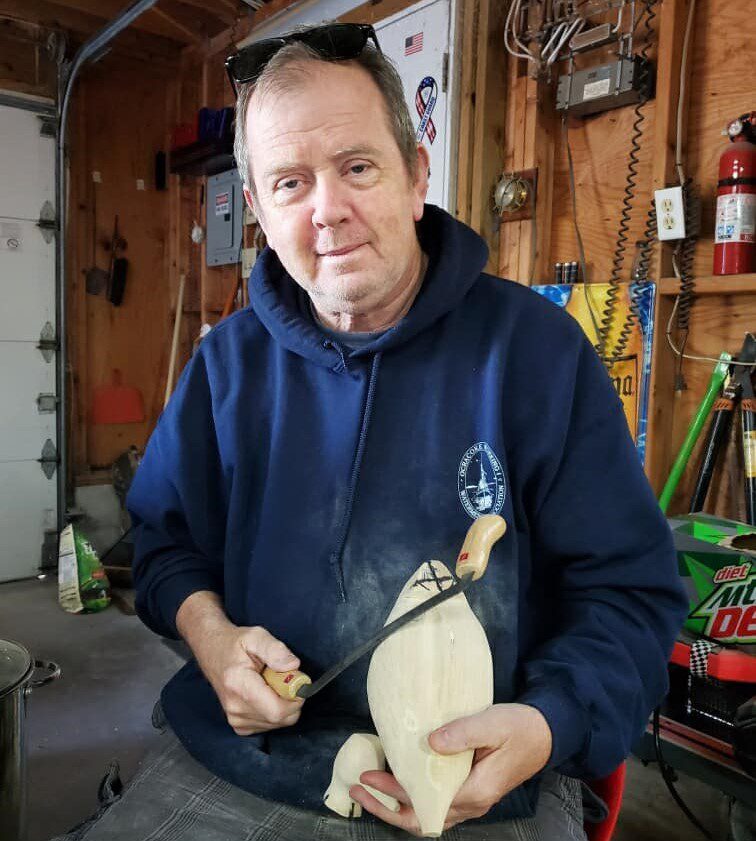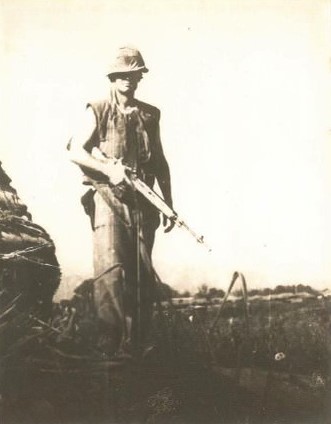A Beachcomber’s View: I Like “Big Chunks” and I Cannot Lie
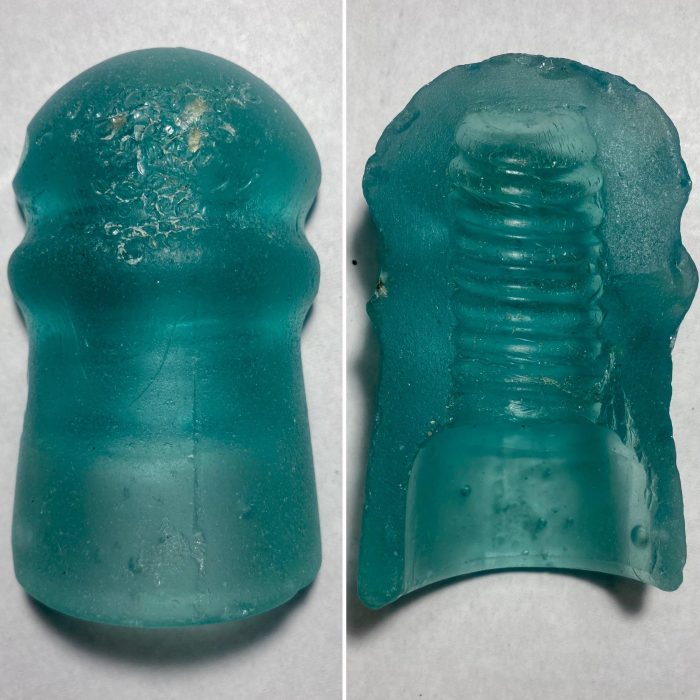
As an avid seaglass huntress on the Outer Banks for the past decade, I am always on the lookout for my next “prized” find, and for me, the chunkier the seaglass, the more cherished it becomes.
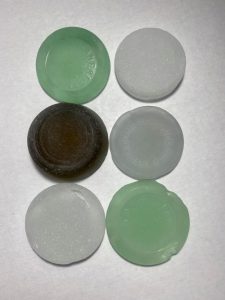
Seaglass is a new creation that is loved by many in these modern times, but comes from something disregarded by our ancestors as waste, which I find incredibly fascinating. Even if I just find one tiny piece of frosty white glass, which is the most common color to find, I always tell myself that “one’s better than none.” Many times, seaglass pieces are relatively flat and less than a quarter-inch thick, and I say relative because most seaglass comes from broken bottles, which are usually curved vessels. However, on occasion, the ocean tosses up a lovely chunky piece that makes me do a dance, singing my altered song: “I like big chunks and I cannot lie!” (Anytime I find something unique or uncommon, I usually sing and dance, just in case you ever see me in action – Don’t be alarmed.)
There are many examples of glass vessels that can produce chunky seaglass pieces. I have learned over the years about such a wide range of items that are now made out of plastics, but were once made from glass, and that knowledge has helped me find many chunky pieces. So I believe that the more you learn about the different types of glass objects that were used in the past, the more you will find better types of seaglass.
Let’s start with my favorite and rarer chunks to find, glass insulators. I actually had no idea about glass insulators when I first started seaglass hunting back in 2005.
Glass insulators have been used around the world since the invention of the telegraph, and come in a rainbow of colors. Nowadays, in America, insulators are made from ceramics and plastics, but when I was visiting Old San Juan, Puerto Rico, I saw on the corners of their blueish-greyish brick roads, up in the top eves of several of the buildings, were clusters of aqua insulators still wrapped up with wire. My parents remember seeing these glass objects laying along the railroad tracks of their hometown in Pennsylvania, but I would have never thought to ask my parents if they knew about them, nor noticed them in Puerto Rico if it wasn’t for seaglass.
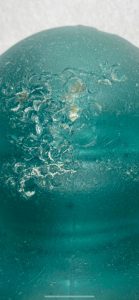
The day I found my first seaglass chunk of an insulator is a day I will never forget! The beach was very clean, and when I say clean, I mean that it was all sand, with no shell pits or seaweed piles, (and I do not mean that it was lacking in trash, because that is never the case.) Since there was a lot of sand I was not finding many treasures, and when I’m not finding goodies, I hunt for trash, because when it is sandy looking along the tideline, that usually means it’s windy or has recently been windy. The trash that washes up or has been buried in a thin layer of sand is now being blown up into the dunes, like plastic bags and balloons, but also Styrofoam pieces and plastic bottles.
Picking up garbage during a beach walk is a best practice that I encourage everyone to do, and when I’m going through a dry spell of not finding any seaglass, I go searching for trash. The funny thing is that whenever I go “out-of-my-way” to get trash, I’m usually instantly rewarded and it’s usually with a show-stopping, mind-blowing, amazing piece of seaglass.
This was one of those moments. I noticed an aqua-colored object way up by the dunes, about 20-30 feet from the tideline. Down by the water, it appeared to look like a sippy cup for a toddler, but once I got up to it, I was in total shock because it was a beautiful piece of seaglass. At the time when I found it, I was a beginner at beachcombing, and couldn’t imagine a piece this big existed.
After several years of continuous beachcombing and seaglass hunting, I eventually learned that the super-chunky and beautiful aqua slice was a piece of a glass insulator. Back then, there weren’t all these great groups online helping people identify their mysterious seaglass finds. So to me, this monster chunk was an out-of-this-world find, and kind of still is, because I still don’t have anything quite like it.
This piece of rich aqua is about four inches tall and a full inch thick, but my favorite thing about it are the pitted “C” marks it displays. The “C” marks are created during one of several processes when the glass is transforming from a broken shard into a treasured or useful piece. What looks like the letter C gets physically stamped onto pieces of glass over and over again during the transformation, and this one has big clusters of “C” marks in the thickest part of it, which, to me, gives it such character.
The “C” marks can be used to help identify fake pieces of seaglass, too. Unfortunately, people have started making fake seaglass, especially rare colors like blues, purples, and reds, and I suspect it is because those are the colors people desire the most, which is very sad. I think of seaglass as a connection to the past – to lost souls of the sea, or a forgotten moment in time. I don’t mind the process of trying to recreate seaglass as an art, but to not advertise it as being fake strikes a personal chord. So the more you know about where seaglass originates from, especially in reference to your area’s history, the better equipped you will be at not being fooled by imposters, as well.
A more common chunk of seaglass to be found are the bases of broken bottles. Since 90% of seaglass comes from bottles, the base of a bottles will be among those chunky pieces too. The base of a glass bottle is normally the thickest part of the bottle for a variety of reasons. I once found a 1-liter glass Coke-a-Cola bottle with Portuguese writing, and the base on it was half an inch thick.
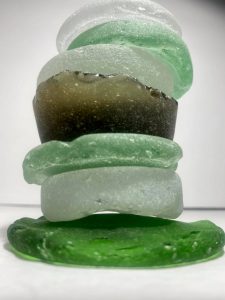
I believe that since the base is generally so thick, it often breaks off of the bottle first. I imagine the bottle filling with sand, and then being tossed by the waves, as the heaviest part gets hit over and over again until it breaks. I have hundreds of bases in clear and brown hues, since those two colors are by far the absolute most common colors to find. I often find new Bud Light or Budweiser bottle bases that are super sharp, and what I call “fresh glass,” which I dispose of properly.
Bottle bases are wonderful to find for collectors, because they can often help you identify what bottle the seaglass base belongs to. Most bottle bases of modern times have markings on the bottom that can be used to identify who made the bottle, when it was made, and where. The bottles that were manufactured in factories often contain the company’s logo or maker’s mark on the bottom of the bottle. Many times, companies would add variations to the mark to indicate the different locations of the glass-producing factories. Avid seaglass collectors can use the marks to figure out where their piece came from, or even what year it was made.
“I like big chunks (of seaglass) and I cannot lie” because these thick chunks show off beautiful defining characteristics of seaglass, like “C” marks, that often get unnoticed in smaller, thinner pieces. So the next time you find yourself seaglass hunting, keep your eyes peeled and your mind open, because you never know what chunkiness might be waiting for you to discover. Hopefully, you learned a little something about seaglass hunting that you didn’t know before, and you can find a nice thick piece of glass.





